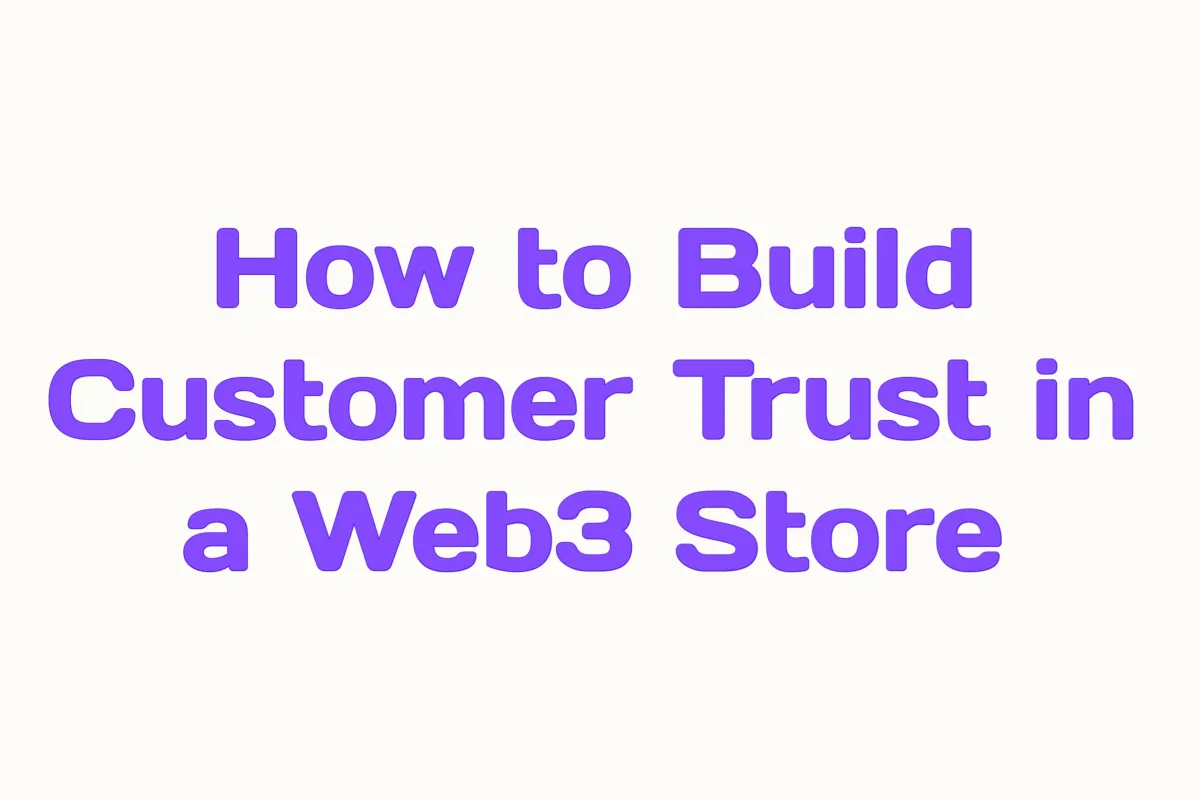
How to Build Customer Trust in a Web3 Store
How to Build Customer Trust in a Web3 Store – The Psychology of Buying Securely Online
Introduction
In the world of e-commerce, trust is the currency that powers transactions. This is especially true for Web3 stores, where buyers aren’t just purchasing products, they’re navigating blockchain wallets, crypto payments, and decentralized platforms.
The potential is huge, but so is the skepticism. For many, Web3 is still a new frontier, and with novelty comes uncertainty. If your customers don’t feel secure, they won’t just avoid buying, they’ll leave, probably never to return.
So, how do you turn this uncertainty into confidence?
The answer lies in understanding the psychology of online buying and using it to create a secure, trustworthy Web3 shopping experience.
1. Trust Starts with Familiarity
Psychologists have long known about the mere-exposure effect, the idea that people are more likely to trust something the more familiar it feels. In Web3, everything is still “new” to many shoppers, so the first step is to make your store look and feel approachable.
Action steps:
Use a clean, intuitive design that resembles modern Web2 e-commerce sites.
Clearly display your brand story, mission, and contact details.
Include a short “How to Shop Here” guide for first-time Web3 users.
The more you bridge the gap between familiar Web2 design and innovative Web3 features, the less intimidating your store will feel.
2. Showcase Security Up Front
The fear of fraud is one of the biggest barriers to buying online, and in Web3, where transactions are irreversible, that fear is amplified. Customers want to know their assets and data are safe before they click “Pay.”
Action steps:
Display your security measures prominently (e.g., encryption, smart contract audits, trusted payment protocols).
Use verifiable blockchain transactions to prove transparency.
If possible, integrate a “transaction preview” feature so customers can see exactly what’s happening before they confirm.
Trust grows when customers see proof, not just promises.
3. Leverage Social Proof
Humans are wired to follow the crowd, if others are buying and having good experiences, new buyers feel safer doing the same. This is social proof in action.
Action steps:
Display reviews and testimonials from verified customers.
Highlight repeat buyers or loyal community members.
Showcase user-generated content (photos, videos, tweets) from happy customers.
In Web3, authenticity matters. Avoid generic reviews, instead, let buyers connect their testimonials to their blockchain identity for extra credibility.
4. Reduce the Perceived Risk
Every online purchase has perceived risk, the fear that “something might go wrong.” In Web3, perceived risk includes technical mistakes, wallet issues, or sending funds to the wrong address.
Action steps:
Offer clear refund or dispute resolution policies, even if you need to structure them creatively for blockchain.
Provide step-by-step purchase confirmations.
Allow customers to try small, low-cost transactions first.
Reducing perceived risk doesn’t just boost trust, it increases conversion rates.
5. Educate Without Overwhelming
Sometimes, distrust comes from simply not knowing how it works. If customers don’t understand blockchain payments or wallet security, they’ll hesitate. The solution? Educate them in simple, human language.
Action steps:
Add short, engaging videos explaining how to shop in your store.
Create a quick FAQ addressing common fears (e.g., “What if I lose my wallet?”).
Share relatable examples, not just technical jargon.
The goal is to turn curiosity into confidence.
6. Build a Community Around Your Store
Web3 is community-driven. If customers feel like they’re part of a tribe, they’re more likely to trust your store. A connected community offers something even stronger than a good UI, it provides social belonging.
Action steps:
Create a Discord, Telegram, or X (Twitter) space for customers.
Hold small giveaways or loyalty rewards in crypto or NFTs.
Feature top customers or contributors in your content.
When people see others actively engaging with your store, their trust increases naturally.
7. Transparency is Non-Negotiable
In Web3, the blockchain already offers transparency, but not everyone knows how to read it. Make transparency easy to understand.
Action steps:
Share transaction histories in a user-friendly format.
Publish smart contract addresses and audits for public review.
Be upfront about fees, shipping times, and policies.
The more visible and predictable your operations, the more customers will feel safe.
The Takeaway – Trust is Built in Layers
Building customer trust in a Web3 store is not a one-step process. It’s a layered strategy that combines psychology, design, education, and transparency.
Every decision, from your homepage layout to your refund policy, either strengthens or weakens that trust. By focusing on familiarity, security, social proof, risk reduction, education, community, and transparency, you can create a Web3 shopping experience where customers feel just as confident as they would on the biggest Web2 e-commerce platforms.
Because here’s the truth:
In the digital economy, the most valuable asset isn’t crypto, NFTs, or even data…
It’s trust, and the brands that master it will own the future of Web3 commerce.
